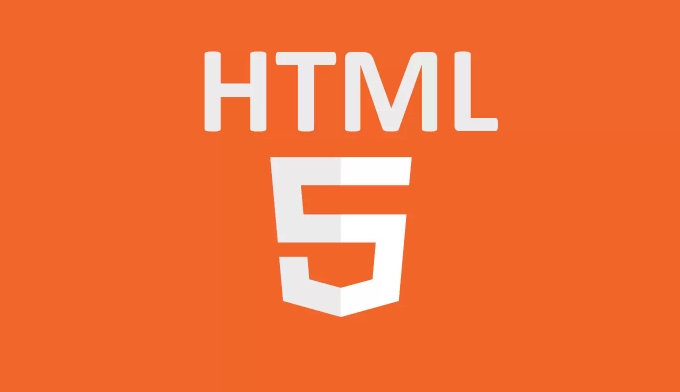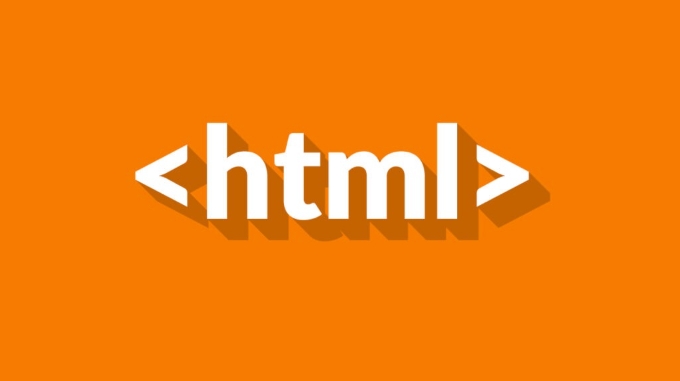Selecting a code editor should be determined based on project requirements, flexibility, and workflow. If you need lightweight editing, such as fast scripts or small projects, you should choose VS Code because it has fast startup, wide language support and concise functions. If you develop large applications, such as .NET, Java, or C projects, you should choose a full-featured IDE, such as Visual Studio or IntelliJ IDEA because it has deep framework integration and advanced debugging capabilities. In addition, VS Code has obvious advantages in customization and remote development, and is suitable for developers who need extended functionality or multi-environment collaboration. Ultimately, tool selection should be based on specific projects and habits. VS Code is suitable for most modern development tasks, and professional IDE is better in specific scenarios.

When it comes to choosing between code editors or tools—like Visual Studio Code and others—the decision usually comes down to what you're trying to accomplish, how much flexibility you need, and your personal workflow preferences. Here's a breakdown of what to consider and when to pick which.
 vs
vsLightweight editing vs. full-featured IDE
If you're working on a quick script, a small project, or just need to make a fast edit, a lightweight editor like VS Code makes a lot of sense. It starts up fast, supports a wide range of languages through extensions, and doesn't bog you down with too many features.
On the other hand, if you're diving into a large-scale application—especially in .NET, Java, or C —a full IDE like Visual Studio (the full version, not Code) or IntelliJ IDEA might be a better fit. These tools offer deep integration with frameworks, advanced debugging, and built-in tools for profiling, testing, and deployment.
 vs
vs- Choose VS Code if: You want speed, simplicity, and flexibility.
- Choose a full IDE if: You're working on complex projects that need advanced tooling.
Customization and extensions
VS Code shines when it comes to customization. It has a massive library of extensions that let you tailor the editor to your exact needs—whether it's adding new language support, integrating with Git platforms, or even connecting to cloud environments.
But keep in mind: with great power comes a bit of complexity. Some extensions might conflict or slow things down if you're not careful. It's worth spending a few minutes reviewing what you install and keeping things streamlined.
 vs
vs- Install only the extensions you truly need.
- Stick to well-maintained, popular ones to avoid bugs.
- Use settings sync if you work across multiple machines.
Collaboration and remote development
One of the standout features of VS Code is its support for remote development . Whether you're working inside a Docker container, SSHing into a server, or using GitHub Codespaces, you can set up a full development environment without cluttering your local machine.
Other tools are catching up, but if your workflow involves working across environments or collaborating in real time, VS Code has a clear edge here.
- Use remote containers for consistent dev environments.
- Try out Live Share for real-time pair programming.
- Set up dev containers with predefined dependencies to save time.
Final thoughts
At the end of the day, it's not about which tool is “better” overall—it's about which one fits your current project and habits. VS Code is incredibly versatile and works well for most modern development tasks. But if you're deep in a specific ecosystem or working on enterprise-level code, a more specialized IDE might be the smarter move.
So start with VS Code unless you have a clear reason not to. It's free, flexible, and has a huge community behind it. And if you hit a point where it's not cutting it, that's when it's worth exploring alternatives.
Basically that's it.
The above is the detailed content of vs : which one to use?. For more information, please follow other related articles on the PHP Chinese website!

Hot AI Tools

Undress AI Tool
Undress images for free

Undresser.AI Undress
AI-powered app for creating realistic nude photos

AI Clothes Remover
Online AI tool for removing clothes from photos.

Clothoff.io
AI clothes remover

Video Face Swap
Swap faces in any video effortlessly with our completely free AI face swap tool!

Hot Article

Hot Tools

Notepad++7.3.1
Easy-to-use and free code editor

SublimeText3 Chinese version
Chinese version, very easy to use

Zend Studio 13.0.1
Powerful PHP integrated development environment

Dreamweaver CS6
Visual web development tools

SublimeText3 Mac version
God-level code editing software (SublimeText3)
 HTML: Building the Structure of Web Pages
Apr 14, 2025 am 12:14 AM
HTML: Building the Structure of Web Pages
Apr 14, 2025 am 12:14 AM
HTML is the cornerstone of building web page structure. 1. HTML defines the content structure and semantics, and uses, etc. tags. 2. Provide semantic markers, such as, etc., to improve SEO effect. 3. To realize user interaction through tags, pay attention to form verification. 4. Use advanced elements such as, combined with JavaScript to achieve dynamic effects. 5. Common errors include unclosed labels and unquoted attribute values, and verification tools are required. 6. Optimization strategies include reducing HTTP requests, compressing HTML, using semantic tags, etc.
 The Role of HTML: Structuring Web Content
Apr 11, 2025 am 12:12 AM
The Role of HTML: Structuring Web Content
Apr 11, 2025 am 12:12 AM
The role of HTML is to define the structure and content of a web page through tags and attributes. 1. HTML organizes content through tags such as , making it easy to read and understand. 2. Use semantic tags such as, etc. to enhance accessibility and SEO. 3. Optimizing HTML code can improve web page loading speed and user experience.
 What are the essential HTML elements for structuring a webpage?
Jul 03, 2025 am 02:34 AM
What are the essential HTML elements for structuring a webpage?
Jul 03, 2025 am 02:34 AM
The web page structure needs to be supported by core HTML elements. 1. The overall structure of the page is composed of , , which is the root element, which stores meta information and displays the content; 2. The content organization relies on title (-), paragraph () and block tags (such as ,) to improve organizational structure and SEO; 3. Navigation is implemented through and implemented, commonly used organizations are linked and supplemented with aria-current attribute to enhance accessibility; 4. Form interaction involves , , and , to ensure the complete user input and submission functions. Proper use of these elements can improve page clarity, maintenance and search engine optimization.
 How to use CSS3 grid layout to create complex web page structures?
Sep 12, 2023 am 11:25 AM
How to use CSS3 grid layout to create complex web page structures?
Sep 12, 2023 am 11:25 AM
How to use CSS3 grid layout to create complex web page structures? In recent years, with the rapid development of the Internet, the complexity of web pages has gradually increased. When designing and developing web pages, how to effectively layout and typeface has become an important issue. The grid layout of CSS3 can help us easily create complex web page structures. Grid layout is a grid-based layout system that uses grid rows and grid columns to structure a web page. By dividing web content into grid cells, we can position and arrange content more flexibly.
 vs : which one to use?
Jul 19, 2025 am 02:31 AM
vs : which one to use?
Jul 19, 2025 am 02:31 AM
Selecting a code editor should be determined based on project requirements, flexibility, and workflow. If you need lightweight editing, such as fast scripts or small projects, you should choose VSCode because it has fast startup, wide language support and concise functions. If you develop large applications, such as .NET, Java, or C projects, you should choose a full-featured IDE, such as VisualStudio or IntelliJIDEA because it has deep framework integration and advanced debugging capabilities. In addition, VSCode has obvious advantages in customization and remote development, and is suitable for developers who need extended functions or multi-environment collaboration. Ultimately, tool selection should be based on specific projects and habits. VSCode is suitable for most modern development tasks, while professional IDE is better in specific scenarios.
 Mastering HTML Semantic Elements for SEO
Jul 26, 2025 am 08:13 AM
Mastering HTML Semantic Elements for SEO
Jul 26, 2025 am 08:13 AM
Using HTML semantic elements can improve SEO effects because they explicitly convey page structure information to search engines. Semantic tags such as,,,,,, and have their own meanings to help search engines identify content roles, such as identifying main content and representing independent articles. Correct usage includes for the top title, putting the main navigation, including the unique main content, wrapping the content with the self-contained content, grouping the titled content, putting the sidebar, and using the bottom information. Semantic tags indirectly improve SEO performance: optimize content structure, assist in barrier-free access, and reduce redundant class names. Practical methods include reviewing existing structures to replace semantic tags, using W3C verification tools, avoiding duplicate tags, combining ARIA to enhance accessibility, and gradually optimizing key pages to achieve results.
 The role of the and tags in semantics.
Jul 23, 2025 am 02:55 AM
The role of the and tags in semantics.
Jul 23, 2025 am 02:55 AM
There is a clear semantic difference: used to emphasize tone, such as "Are you really sure you want to do this?", the screen reader will read in different tones; it indicates the importance of the content, such as "emergency notice", which conveys high priority information. When using it, you should select tags based on semantics to avoid abuse, and customize CSS styles to improve accessibility and SEO effects.
 Understanding HTML5 Semantic Elements Structure
Jul 15, 2025 am 02:29 AM
Understanding HTML5 Semantic Elements Structure
Jul 15, 2025 am 02:29 AM
The main purpose of HTML5's introduction of semantic tags is to improve the clarity, readability, barrier-free access and SEO effects of web page structure. 1. Semantic elements such as,,,,,, can clearly identify content roles; 2. They help developers, browsers and assistive technologies to understand page structure; 3. The correct organizational structure should be arranged in the order of head, navigation, main content, sidebars, and tails; 4. Common misunderstandings include abuse, wrong nesting, ignoring title hierarchy, reuse, etc.; 5. Although semantic tags are beneficial to SEO, they need to be optimized in conjunction with content quality and performance.






